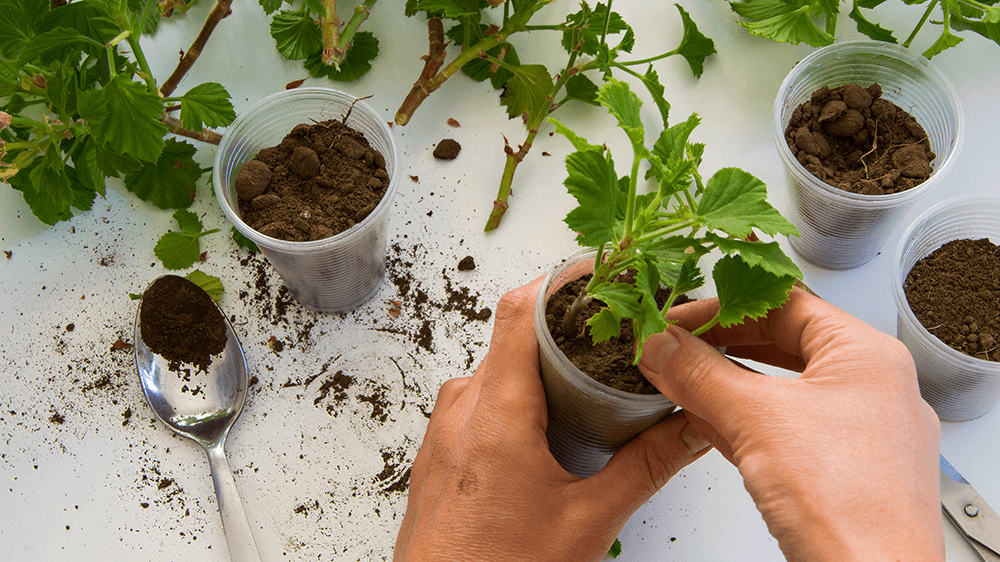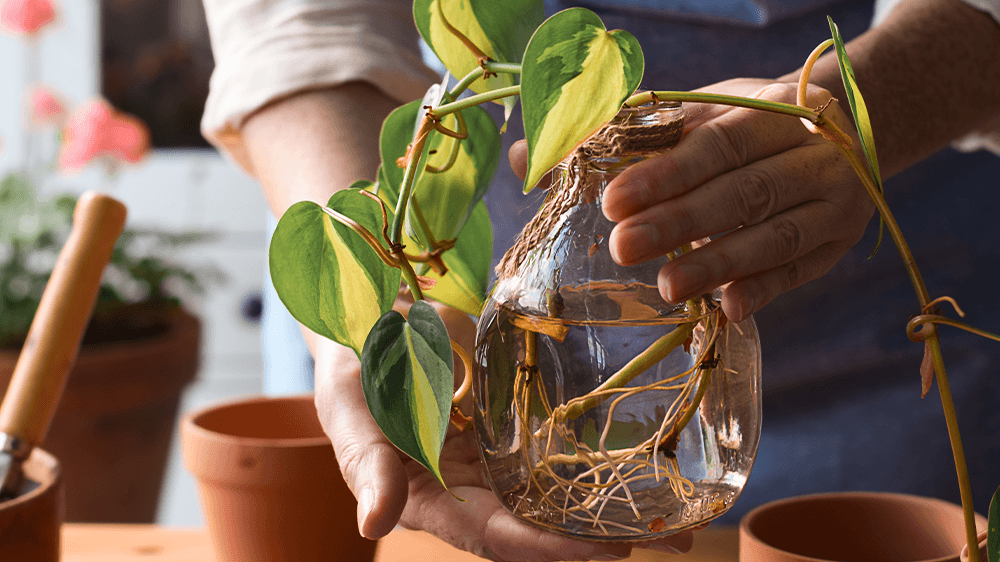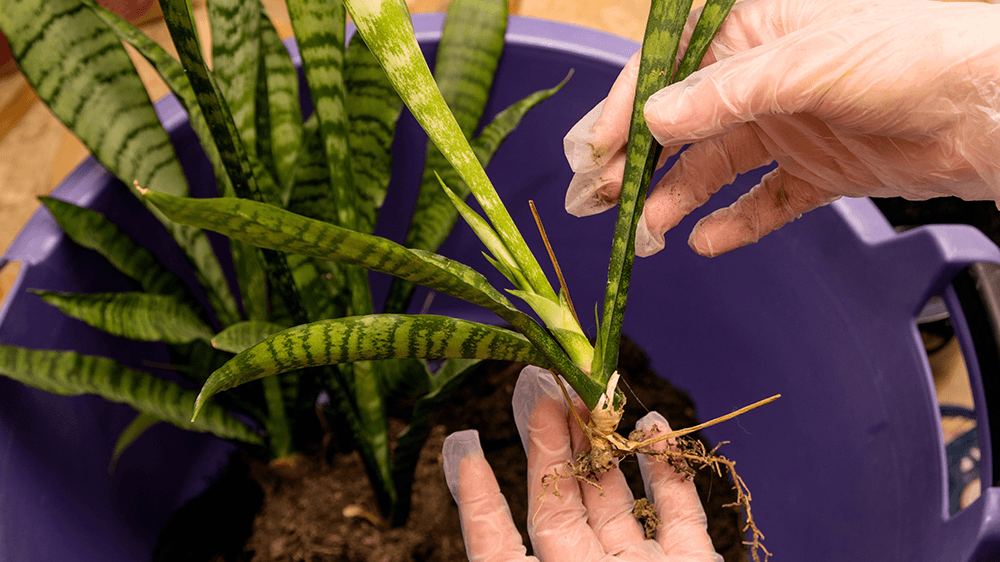Did you want to learn how to propagate plants but didn’t know where to start? It is easier than you think. Whether you want to grow your kitchen herb garden a little bigger, or can’t get enough of a few of your favorite houseplant varieties and want to have more in your home, propagating is an easy, affordable way to do it!

What Is Plant Propagation?
Plant propagation is a fancy way of explaining how we create more plants. There are a few ways to propagate plants, but they generally fall into two categories: sexual and asexual propagation.
Sexual propagation occurs when seeds or spores are fertilized (i.e., two plant parents create a whole new third plant). Asexual propagation, on the other hand, involves creating a new plant from a single plant parent using techniques like cuttings, layering, and dividing. We will focus on asexual plant propagation for this blog.
Why Would I Want to Propagate My Plants?
One of the key benefits of asexual plant propagation is that it tends to be easier and faster than growing plants from seed. You end up with an already somewhat mature plant much quicker. As we mentioned earlier, it’s a fantastic way to boost your houseplant collection or grow more of your favorite plant varieties in the garden without having to spend a dime!
Important: “Proplifting Is Shoplifting”
It is important to note that taking your own cuttings from plants at garden centers is indeed considered shoplifting. While we appreciate the fun and benefits of propagating plants, we strongly enforce that propagation only be done on plants you’ve purchased or already own.

Propagating Your Plants With Stem Cuttings
Plants that produce ‘pups’ or plantlets are the easiest plants to propagate from stem cuttings. These include spider plants, pothos, and philodendrons. They are beginner-friendly because they root easily in water. Soft-stemmed garden plants like geraniums, impatiens, and begonias also root in water.
If you hope to propagate a houseplant like, say, a pothos, start by chopping a four to six-inch length of the healthy stem off the ‘mother plant.’ You will want to gently remove the lowest leaf on the cutting (the one that is closest to where you cut,) and then you are ready to start rooting!
There are two different ways to root your cutting. The first way is to simply put the cut end into a Mason jar or a clear glass cup filled with water and then place the jar somewhere that gets lots of indirect light, but not direct sunlight. Once you start to see your cutting develop roots (this usually takes a couple of weeks,) you can transplant it into soil to continue growing into a big, beautiful new houseplant. Be sure to change the water every few days while waiting for your new plant to grow roots.
The second way to propagate with a cutting is by dipping the cut end in a rooting hormone. For this process, you’ll want to make sure you take the lowest leaf off of the cutting, and be sure to cover the first set of root nodes in the rooting hormone. Then, place your cutting into a potting mix of damp peat moss, vermiculite, perlite, or sand. Keep the potting mix moist, but not wet to avoid root rot.

Propagating Through Division
Division is a propagation method used for any plant grown from bulbs, tubers, rhizomes, and houseplants such as snake plants. If you have any perennials in your garden, you are most likely familiar with the process! To propagate by division, carefully dig up the plant and gently twist the daughter bulbs off the mother bulb. Plant all new divisions, or store them for the dormant season, and you’ll expand your collection in no time!

If you are ready to try some of these plant propagation methods or learn about more ways to propagate your plants, stop by our garden centers in St. John or Frankfort. Our staff are always happy to chat more about this fascinating process and set you up with all of the supplies you’ll need to get started.
